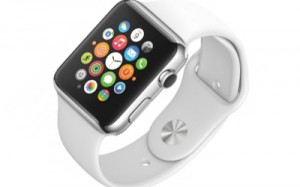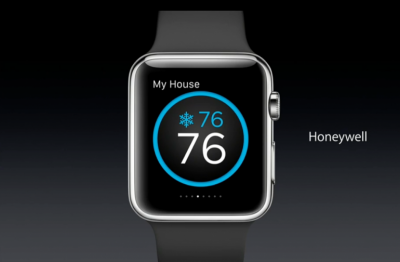There’s no consensus among industry analysts as to how successful the Apple Watch will be, and so it stands to reason that there will be no clear consensus among consumers once the device is released in early Spring 2015.
Earlier this month, tech analysts at UBS estimated Apple will sell 24 million Apple Watch units. The company reached this figure through a poll of current Apple consumers, through which they discovered that 10 percent of owners of an iPhone 5 or later planned to actually amble over to an Apple Store to purchase an Apple Watch once they are released.
But there are plenty of voices taking issue with the UBS estimates. Ashraf Eassa of the Motley Fool calls the UBS forecast “completely unrealistic”. Eassa cites the “indispensable” nature of the iPhone and to a lesser extent the iPad, and argues that the Apple Watch does not share that fundamental importance.
Limitations to Apple Watch Demand
 Eassa says that the Apple Watch “does some very interesting things and is in general a neat gadget, but keep in mind that most of what the Apple Watch does can be done on an iPhone. It may be slightly less convenient in some cases, but given that the cheapest Apple Watch will come in at $299, with the more premium models rumored to be priced at a multiple to that, the value proposition seems iffy compared to even the most expensive unlocked 128-gigabyte iPhone.”
Eassa says that the Apple Watch “does some very interesting things and is in general a neat gadget, but keep in mind that most of what the Apple Watch does can be done on an iPhone. It may be slightly less convenient in some cases, but given that the cheapest Apple Watch will come in at $299, with the more premium models rumored to be priced at a multiple to that, the value proposition seems iffy compared to even the most expensive unlocked 128-gigabyte iPhone.”
Furthermore, the great value of the iPhone as far as Apple is concerned lies in the fact that many consumers are willing to upgrade to newer models as soon as they are released. One of the problems with the iPad is that people don’t flock to newer versions like they do with the iPhone, even though their upgrade cycles are much longer than the iPhone. So how will people react to the Apple Watch, whose upgrade cycles promise to be even longer? The betting is that Apple will be awfully hard-pressed to get consumers to upgrade their $300 Apple Watch every couple of years.
If that’s the case, Apple Watch numbers will surely decline after the initial sales surge.
Apple analyst Gene Munster has released figures which show that interest in the Apple Watch has been slowly declining since September. His numbers show that the percentage of iPhone owners who intend to purchase an Apple Watch has dropped from 10 to 7 percent since Apple’s announcement of the device in September. He thinks the numbers suggest Apple will sell only 10 million Apple Watch units in 2015.
Sometimes Interest Spikes When New Product Hits Shelves
However, Munster made an appearance on CNBC in which he seemed to offer some wiggle room that Apple Watch sales could go higher. He noted that before the iPad first hit the shelves, intention to purchase among Apple consumers was similarly low, and people didn’t think the device was all that special. But as soon as they saw the product, and held it in their hands, the interest level jumped up.
 Let’s be honest, we’ve seen this scenario before. People’s interest in a new device doesn’t peak until they actually get to hold one in their sweaty little palms.
Let’s be honest, we’ve seen this scenario before. People’s interest in a new device doesn’t peak until they actually get to hold one in their sweaty little palms.
Munster went on to say that his 10 million sales projection “seems like a small number, but keep in mind is that if you look at the broader scheme of how this plays out, you are going to have one strong quarter and that number, that 10 million number, may end up being slightly low. But at the end of the day, these interest levels are currently so minuscule that it’s hard to put more optimistic numbers.”
He concluded with a thought that we’ve mentioned here many times before: Those who are truly interested in the Apple Watch might be better off waiting until 2016 before wading into the market. Munster said that “2015 is a set-up year. 2016 is where it gets more exciting when the apps start to roll out for the Watch.” Perhaps it would be wisest to let Apple Watch work the kinks out and establish its top apps before buying in.
Unless you get one in your hands this Spring, and you simply can’t stop yourself from wanting one.
